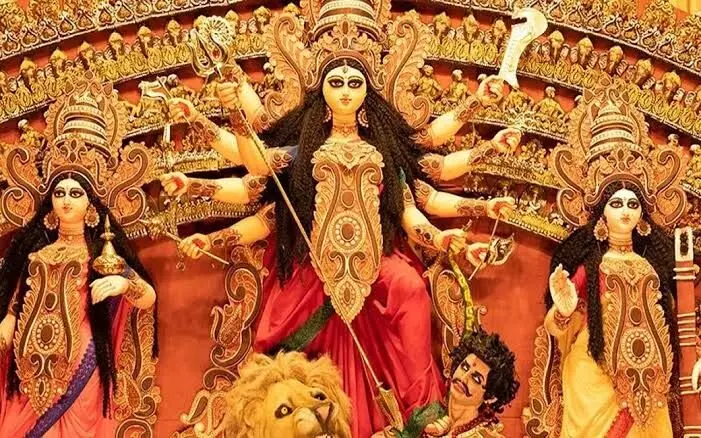TRENDING TAGS :
Sharad Navratri: Celebrating the Divine Feminine Energy
Navratri, a vibrant and spiritually significant festival, is observed by millions of Hindus worldwide. "Navratri" literally translates to "nine nights," and Sharad Navratri is one of the most widely celebrated among the various Navratri festivals. This year, the festival commences on [specific date] and concludes on [specific date], spanning nine nights and ten days.
Historical Roots:
The roots of Sharad Navratri can be traced back to ancient Hindu mythology. It is believed to commemorate the victory of the Goddess Durga over the demon Mahishasura, symbolizing the triumph of good over evil. The legend narrates that Mahishasura, a powerful demon, wreaked havoc on the heavens, causing distress to gods and goddesses. In response, the divine Trinity – Brahma, Vishnu, and Shiva – combined their energies to create Goddess Durga, endowing her with various weapons. After a fierce battle that lasted for nine nights, Durga emerged victorious, and her triumph is celebrated during Sharad Navratri.
Significance of the Nine Nights:
Each night of Navratri is dedicated to a different form of Goddess Durga, known as Navadurga. The nine forms are Shailaputri, Brahmacharini, Chandraghanta, Kushmanda, Skandamata, Katyayani, Kalaratri, Mahagauri, and Siddhidatri. Devotees worship these manifestations, seeking divine blessings and protection.
**Religious Observances:
Sharad Navratri is marked by elaborate rituals, fasting, and prayers. Devotees often engage in special pujas (religious ceremonies) and visit temples dedicated to Goddess Durga. The festival is also characterized by vibrant and energetic dance forms, particularly Garba and Dandiya Raas. These traditional dances are performed with fervor, reflecting the joyous spirit of Navratri.
**Fasting and Purity:
Many followers observe fasts during Navratri, abstaining from certain foods and adhering to a pure and satvic diet. This practice is believed to purify the body and mind, allowing devotees to connect more deeply with the divine. Some choose to fast for the entire duration of Navratri, while others may opt for specific days.
**Symbolic Colors:
Each day of Navratri is associated with a specific color, and devotees often wear clothing reflecting these hues. The colors hold symbolic significance, representing various aspects of the goddess and the cosmic energy. For instance, red symbolizes action and vigor, while blue signifies tranquility and infinity.
**Community and Togetherness:
Navratri is a time of community and togetherness. People come together to celebrate through music, dance, and prayers, fostering a sense of unity. The festival transcends regional and cultural boundaries, bringing people from diverse backgrounds together in the spirit of joy and devotion.
**A Reminder of Values:
Beyond the festivities, Navratri serves as a reminder of essential values such as righteousness, courage, and devotion. The stories associated with each form of Durga inspire individuals to overcome challenges with strength and determination.
**Caution Against Comparison:
In the modern age, where social media often portrays curated images of seemingly perfect lives, Navratri carries a subtle message. It encourages individuals to appreciate their unique strengths and virtues instead of comparing themselves to others. The festival teaches that each person is on their own journey, and acknowledging one's strengths leads to a more fulfilling and contented life.
In conclusion, Sharad Navratri is a celebration of divine feminine energy, symbolizing the victory of good over evil. As millions come together to worship, dance, and rejoice, the festival becomes a testament to the enduring spirit of unity and devotion. May this Navratri bring joy, prosperity, and spiritual enlightenment to all.



